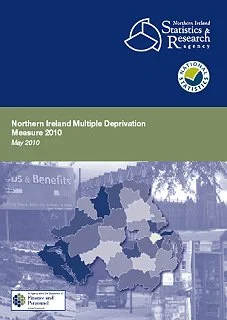Structural Inequality Remains Entrenched In The Six Counties
The publication of Northern Ireland Statistics and Research Agency’s report on multiple deprivation last Wednesday [May 26] has confirmed the inequality that remains at the heart of the Six-County state.
The report looked at deprivation in seven domains across the Six Counties’ 890 Super Output Areas [SOAs] – electoral wards broken down into areas with an average population of 2,000 people.
The seven domains were income deprivation; employment deprivation; health deprivation and disability; education, skills and training deprivation; proximity to services; living environment; and crime and disorder.
Unsurprisingly, the most poverty-stricken areas in the Six Counties also came first in terms of multiple deprivation. The ‘Whiterock 2’ area, representing the Ballymurphy and Springhill estates in west Belfast, topped the list. This area is also recorded as having the highest incidence of employment deprivation – i.e. unemployment – at 42 per cent as well as the highest incidence of income deprivation – the number of people receiving some form of income support – at 90 per cent.
Contrast this with the ‘Wallace Park 1’ area in Lisburn, which was ranked the least deprived area in the Six Counties. This area has only a two per cent incidence of employment deprivation and a three per cent incidence of income deprivation.
Of course, the Six Counties being the Six Counties, it also bears mentioning that ‘Whiterock 2’ is recorded as 98.8 per cent “from a Catholic community background”, whereas, in ‘Wallace Park 1’, this figure stands at 16.7 per cent.
A look at the 100 areas most afflicted by multiple deprivation reveals that 72 of them are nationalist communities. Sixty-five of the top 100 are areas in which people “from a Catholic community background” make up 75 per cent or more of the population.
Of these 100 areas, 28 are in the constituency of West Belfast alone, including six of the 10 most deprived. 21 are in North Belfast, and 16 are in the Foyle constituency. Not a single SOA from the more affluent unionist strongholds of North Down, South Antrim or Strangford appears in the 100 most deprived areas.
Commenting on the publication, Rúnaí Ginearálta Éirígí Breandán Mac Cionnaith said: “This report reveals the extent to which working class communities in the Six Counties, and working class nationalist communities in particular, are denied the necessities for living a full and happy existence.
“There has been no structural or radical change to the make-up of the Six County state over the last two decades; there is no such thing as the ‘new Northern Ireland’. What we have is a state that is incapable of meeting the basic needs of its working class citizens and a state that will, for as long as it remains in existence, treat the nationalist working class as second class citizens.”
Mac Cionnaith continued: “This report should encourage people to reflect on the kind of society in which we live. Unfortunately, the Tory-led government in Westminster and its Stormont administration are hell-bent on introducing hundreds of millions of pounds worth of cuts in the immediate future, with more attacks on vital services on the horizon.
“People must act to stop these cuts and to defend what their communities have at present, lacking though it is in many ways. The Tory axemen must be beaten back, or we will be condemning our children to generations of even worse deprivation. Now is the time to do that.”


